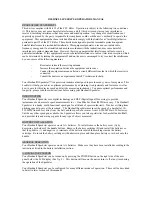
Table 1 below gives calculated distances for the figure 1 above.
Total distance
Pitcher to seats
( ytot)
Distance off center (x)
at a 10° angle
(gives a 1.5% error)
Distance off center (x)
at a 20° angle
(gives a 6% error)
Distance off center (x)
at a 30° angle
(gives a 13% error)
30
5 ft.
10 ft.
17 ft.
40
7 ft.
14 ft.
23 ft.
50
8 ft.
18 ft.
28 ft.
60
10 ft.
21 ft.
34 ft.
70
12 ft.
25 ft.
40 ft.
80
14 ft.
29 ft.
46 ft.
90
15 ft.
32 ft.
51 ft.
100
17 ft.
36 ft.
57 ft.
Table 1
According to the table, assuming the average distance from the pitcher to catcher (y) is 60 feet, there will
also be an average distance behind the catcher to the seats (y1). This is assumed to be an average of 20 feet.
So the total distance from pitcher to
Speedster
(ytot) is 80 feet for this example. This is the straight-line
direction of ball travel, not the distance from the pitcher to the actual
Speedster
position, which is R.
If you sit at a distance of 14 ft. off center of the direct pitcher to catcher line, then you have an angle of
incidence of 10°. Most importantly, this gives you an error of 1.5% in measured speed, which is acceptable.
Following the chart across, if you sit 29 ft. off center this correlates to a 20° angle and a 6% error. See the
Measured Speed vs Angle chart for more information on error percentage.
As noted earlier, the larger the angle of incidence the greater the error in the measured speed. Figure 2
below indicates the percent error vs. the angle of incidence.
Figure 2
The graph indicates that at an angle of 0° (direct line) there is no error. If there is an angle of 10° the error
is about 1.5%, for a 20° angle it is about 6% and for a 30° angle the error is about 13%, probably
unacceptable for baseball pitches.
Measured Speed vs Angle (% of actual speed)
0
10
20
30
40
50
60
70
80
90
100
0
10
20
30
40
50
60
70
80
90
100
Angle of Incidence
% of True Speed









